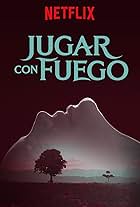The original text, entitled "The Nova St. Girl Who Was Walled-Off," which served as an argument, would probably have provided a much superior material. It was written by Carneiro Vilela (1846-1913) of northeastern Brazil. Like Edgar Allan Poe's "The cask of Amontillado," it also contains a character called Fortunato. And alike Poe's Fortunato, who was lured into an underground crypt and bricked alive, the protagonist, a bourgeois young impregnated by her boyfriend is incarcerated in her own room at the behest of her father, the wealthy merchant Jaime, in order to cover up the shame and preserve the family honor. The story is still shrouded in mystery . In real life, the crime was supposedly committed in a loft sited on #200 Rua Nova (Nova St.) in Recife. Vilela's work was published, duly serialized, from 1909 to 1912 , then converted into a novel. Is this a true case, or a product from the imagination of an indefatigable writer? Anyhow the novel vividly portrayed the society of late nineteenth century , while the 2014 TV series chose to focus on a story of passion , sex , betrayal and vengeance, based on the old stereotypes of narrow-minded, sexist Colonels for whom the paramount honor of the mighty had to be washed with blood and everything should be solved through oppression or bullets, with the aid of thugs. I'll praise the photography by Walter Carvalho , full of inclined shots and super close-ups, revealing stunning backdrops that present the backwoods of Northeast Brazil's wine region. I'll reject, however, the commercial appeal of erotic scenes which abuse of slow motion and redundant flashback fillers without any other purpose than, say, in-caliente, ad- nauseam repetition.



























